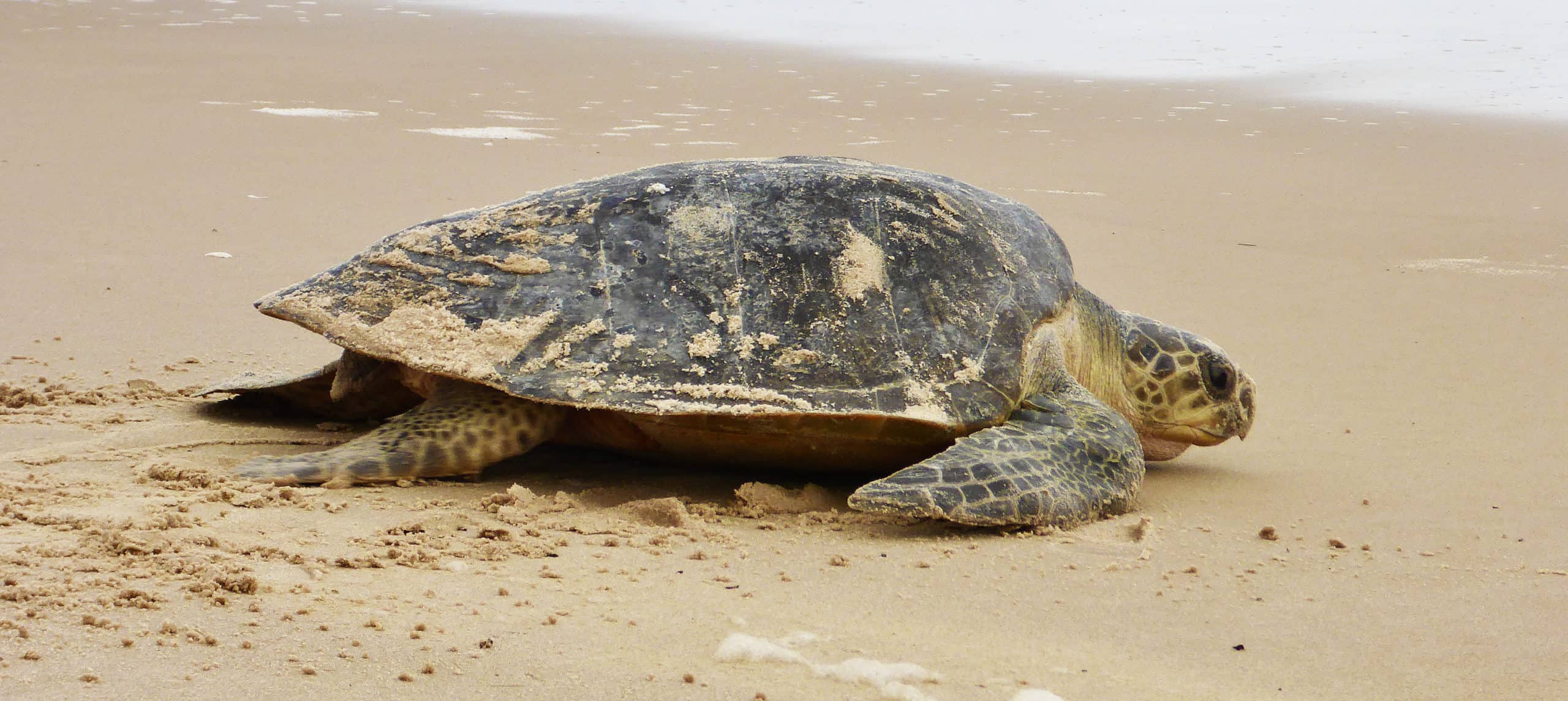Share this article
Conservation efforts aiding sea turtles in Congo
Two decades of conservation efforts have benefited sea turtles in the Republic of Congo.
In a study of nesting trends in the country, researchers found olive ridley sea turtle numbers have been on the rise and that after an initial decline, leatherback turtle numbers have become more cyclical, with periods of highs and lows—a pattern not uncommon for the species.
The study, published in Frontiers in Marine Science, is the first to look at long-term trends for the two species in Congo over the past decade. Researchers coupled unpublished data collected by several Congolese and international conservation organizations with sophisticated modeling techniques to understand changes in their nest numbers.
The findings point to the importance of conservation efforts in the country and the key role Congo’s sole marine park, Conkouati-Douli National Park, played in protecting the species.
“Conservation in Congo has been going on for several decades now, with the government and NGOs coming to help them,” said lead author Lucy Omeyer, a postdoctoral research associate at the University of Exeter in the United Kingdom.
Congo plays an important role for sea turtles. It hosts Central Africa’s second largest known population of olive ridley (Lepidochelys olivacea) sea turtles—one of the largest solitary nesting populations in the world—and the region’s third largest population of leatherback (Dermochelys coriacea) sea turtles.
But the turtles face an array of threats, including the illegal take of turtles and eggs, bycatch in fishing nets and the loss of nesting and foraging habitats through urban expansion, climate change and pollution.
Conservation efforts have reduced these threats, but because the work has been carried out by a variety of organizations, including Renatura Congo, the Wildlife Conservation Society and the Congolese government, tracking the numbers has been a challenge.
“That’s part of the problem,” Omeyer said. “Because different organizations have been involved, the data that have been presented in the literature have been quite fragmented.”
The team’s goal was to bring the data together and use modeling to fill in the missing pieces. They found that efforts to protect sea turtles—both on land and at sea—have helped these two populations recover. Researchers found leatherback turtles in Congo laid an average of 573 egg clutches annually between 2012 and 2017. Olive ridley sea turtles laid an average of 1,087 clutches each year over the same period.
The modeling methods can help researchers studying sea turtles elsewhere, Omeyer said. The conservation efforts could also be applied to benefit sea turtles in other countries.
“We have been working tirelessly for more than 15 years to protect sea turtles in the Republic of Congo,” said Nathalie Mianseko, director and founder of Renatura Congo, in a press release.
Her organization has been using beach patrols and environmental education campaigns aimed at both children and adults to reduce the removal of females and their eggs. Its bycatch release program has returned over 18,000 turtles accidentally caught in fishing nets since 2005, Mianseko said.
“These are all things that are beneficial and have helped turtles in Congo,” Omeyer said.
Header Image: An olive ridley sea turtle moves across the sand on a beach in the Republic of Congo. Credit: Kristian Metcalfe








